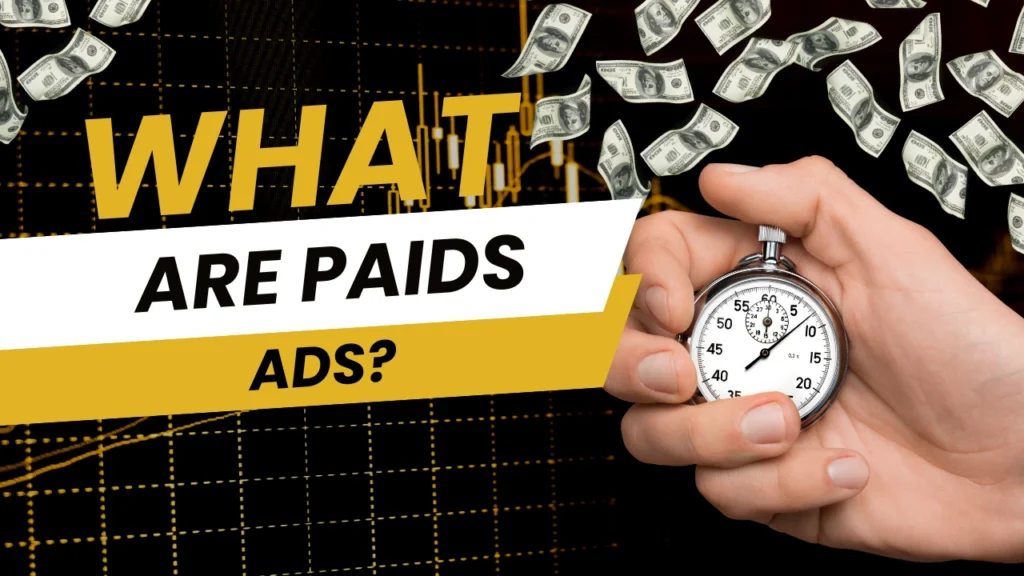
In the vast world of digital marketing, paid ads stand out as one of the most effective ways to reach targeted audiences quickly and drive results. Whether you’re a startup or a global brand, running paid advertising campaigns can help boost visibility, traffic, leads, and sales. But how do they work? And more importantly, how can you use them to grow your business?
This guide is designed to help beginners understand the basics of paid ads, explore different platforms, and learn how to run successful campaigns step-by-step.
Why Paid Ads Matter in Digital Marketing
While organic strategies like SEO and content marketing are essential, they take time. Paid ads, on the other hand, offer instant visibility. Let’s break down why they matter:
1. Instant Reach
Unlike organic methods, paid ads allow you to appear at the top of search results or within users’ social feeds instantly.
2. Laser-Targeted Audience
With advanced targeting options, you can show your ads to the exact audience based on their age, interests, behavior, location, and more.
3. Performance-Driven
With the right setup, you can track every click, impression, and conversion, making paid ads a highly measurable marketing tool.Types of Paid Ads
Now ,let’s dive into the most popular types of paid ads used by businesses today.
1. Search Ads (PPC – Pay-Per-Click)
These appear on search engines like Google when users search for related keywords. You pay only when someone clicks on your ad.
2. Display Ads
These are image or banner-based ads that appear across websites in the Google Display Network or other platforms.
3. Social Media Ads
Platforms like Facebook, Instagram, LinkedIn, and Twitter allow brands to run highly engaging and targeted paid ads.
4. Video Ads
Often used on YouTube or Facebook, these allow you to promote your product or message through video content.
5. Shopping Ads
Perfect for eCommerce brands, shopping ads display product images, prices, and links directly on search engines.
How Do Paid Ads Work?
Let’s simplify the process:
Step 1: Choose Your Platform
First, decide where your audience is most active — Google, Instagram, Facebook, etc.
Step 2: Set a Budget
You control how much you want to spend daily or monthly. Some platforms allow as little as ₹100/day.
Step 3: Select Your Target Audience
Define who sees your ad using demographics, interests, behaviors, and more.
Step 4: Create the Ad
Write compelling copy, choose strong visuals, and ensure there’s a clear call to action (CTA).
Step 5: Launch and Monitor
Once live, track results using tools like Google Analytics, Meta Ads Manager, or platform dashboards.
Choosing the Right Platform for Paid Ads
Choosing the best platform depends on your business goals and audience.
| Platform | Best For | Format Type |
|---|---|---|
| Google Ads | Search traffic, website visits | Search, Display, Shopping |
| Facebook Ads | Brand awareness, retargeting | Image, Video, Carousel |
| Instagram Ads | Visual content, younger audience | Stories, Reels, Feed |
| LinkedIn Ads | B2B marketing | Sponsored posts, InMail |
| YouTube Ads | Product explainers, storytelling | Skippable/Non-skippable ads |
Crafting High-Performing Paid Ads
Here are some pro tips for designing great ads:
1. Clear Headline
Capture attention in the first few words.
2. Strong CTA (Call-to-Action)
Use phrases like “Shop Now”, “Learn More”, “Get Started”.
3. Eye-Catching Visuals
Use high-quality, relevant images or videos.
4. Relevance to Audience
The ad content must speak directly to your target group’s interests or pain points.
5. Test Multiple Variations
A/B test your headlines, images, and CTAs to see what performs best.
How to Measure the Success of Paid Ads
Use the following key metrics to measure campaign performance:
- CTR (Click-Through Rate): % of people who clicked your ad
- CPC (Cost Per Click): How much you pay per click
- Conversion Rate: % of users who completed a desired action
- Impressions: How many times your ad was shown
- ROI (Return on Investment): Revenue vs. cost of the ad
Common Mistakes to Avoid
Even experienced marketers can fall into these traps:
- No Clear Goal – Always define what success looks like (sales, leads, clicks).
- Poor Targeting – Don’t show ads to irrelevant audiences.
- Ignoring Mobile – Most users browse on mobile; optimize your ad format accordingly.
- No A/B Testing – Without testing, you won’t know what works.
- Low Budget with High Expectations – Be realistic about what your budget can achieve.
FAQs
Q1: Are paid ads better than SEO?
Paid ads deliver faster results, while SEO builds long-term traffic. Both are essential for growth.
Q2: How much do paid ads cost?
It varies. You can start with as little as ₹100/day, but costs depend on competition and targeting.
Q3: Can small businesses benefit from paid ads?
Absolutely! With proper targeting and budgeting, even small brands can grow quickly through paid ads.
Q4: How long does it take to see results?
In most cases, you’ll start seeing traffic or engagement within 24–48 hours after launching your campaign.
Conclusion
If you want to reach the right audience quickly, test your offer, and drive measurable results, paid ads are a must in your digital marketing toolkit. However, successful advertising isn’t about spending big—it’s about being smart. By targeting the right audience, creating compelling content, and optimizing continuously, you can make every rupee count.
ABOUT THE AUTHOR
Chelsi Sharma is a passionate digital marketer dedicated to helping businesses grow online through SEO, email campaigns, social media strategies, and paid ads. With hands-on experience and an eye for trends, she simplifies complex digital strategies so anyone—from solopreneurs to brands—can thrive online. Connect with her at chelsisharma.com.
